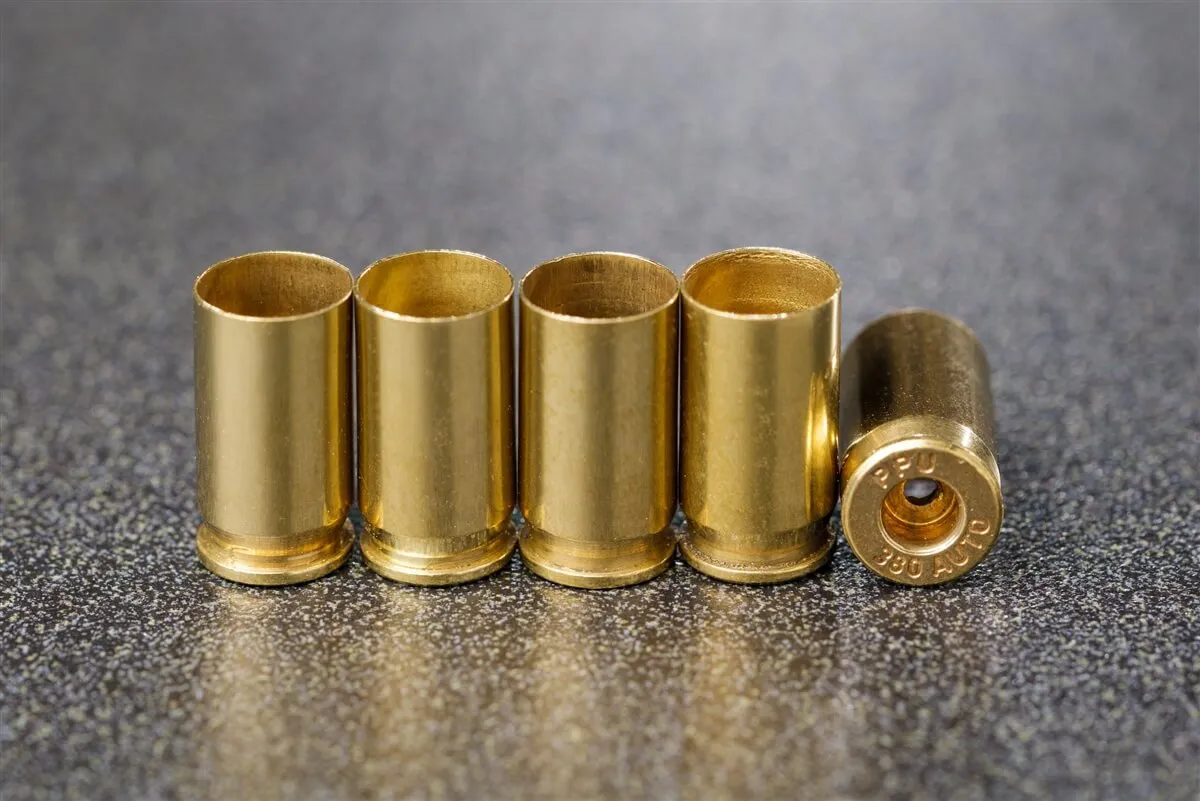Those who like to take personal defense safety seriously know the importance of proper maintenance on our firearms. Sometimes, something as simple as checking your internals and replacing inexpensive parts in your bolt carrier group can make a big difference in keeping your AR-15 reliable for a long time.
Luckily, you won't have to search for the best BCG kits for your AR-15. We provided you with a complete buyer's guide and a list of the best .300 Blackout bolt carrier groups in the market. All you have to do is click on the BCG you're eyeing on.
| Palmetto State Armory 5.56 Premium Full Auto Bolt Carrier Group |
|
$90
 Shop NowClick to read my review
Shop NowClick to read my review | |

|
2A Armament AR15 Regulated Bolt Carrier Group (RBC) |
|
$313
 Shop NowClick to read my review
Shop NowClick to read my review |
 Best for Left-Handed
Best for Left-Handed
|
Toolcraft Logo'd Left Handed 5.56 Nitride MPI Full-Auto Bolt Carrier Group |
|
$170
 Shop NowClick to read my review
Shop NowClick to read my review |
 Best Aesthetic
Best Aesthetic
|
Faxon Firearms Gunner Lightweight 5.56/.300 Bolt Carrier Group |
|
$300
 Shop NowClick to read my review
Shop NowClick to read my review |
BONUS OFFER: Get your free shooting range targets to print at home!
Get your free targets to print at home!
What's a Bolt Carrier Group?

You can find the bolt carrier group in any semi-automatic rifle or pistol. It acts as the primary action mechanism of a firearm. It also houses the bolt and resets your firearms hammer.
The bolt carrier group is an indispensable part of your AR-15. Located in the upper receiver, it's absolutely integral at enabling your AR-15 to function and is the primary part responsible for your gun's semi-automatic fire.
The .300 AAC Blackout Round

Before we talk about bolt carrier groups, why should you even go with the .300 Blackout in the first place?
Since it's inception in 2011, the .300 Blackout has become one of the most popular AR-15 calibers. Originally created as a specialized close-combat round for spec-ops, the .300 AAC Blackout cartridge for the AR-15 platform has grown in popularity on the civilian market in recent years with good reason.
The heavier grain .300 AAC Blackout offers better ballistic performance and stopping power than the more popular 5.56 in subsonic AR setups. Since the case dimensions of the 5.56 and .300 AAC Blackout are almost the same, you can chamber most rifles with standard 5.56 parts with the .300 Blackout cartridge.
Parts of a Bolt Carrier Group

Bolt Carrier
It's very easy to mix up the terms bolt carrier and bolt carrier group. When we talk about the bolt carrier group, we're talking about all the functioning parts as a whole. The bolt carrier, on the other hand, is the housing for the other pieces of the BCG.
The bolt carrier is usually built out of hardened 8620 or 9310 steel. It absorbs the force of the presserized gas from each fired round and resets the hammer as it goes back and forth within your AR-15 upper.
Carrier Key
The carrier key, also known as the gas key, is a protrusion located at the top of the bolt. It's hollowed out and fits over the end of the gas tube within the upper receiver. After firing a round, the carrier key receives the pressurized gas from the barrel chamber through the gas tube. Then, it uses this force to cycle the rifle's action through the BCG.
Bolt and Extractor
The bolt and extractor is a gear faced metal unit located at the front of the bolt carrier group. It's the driving force behind loading new cartridges and ejects old shells from the magazine to the chamber. During the rearward motion of the BCG, the extractor latches onto the rim of the cartridge. Then, it extracts the spent cartridge shells from the chamber pulling towards the ejector. During the forward motion, the bolt strips a cartridge from the magazine and injects it into the chamber.
Firing Pin
After pulling the trigger, the hammer hits the firing pin which strikes the primer causing it to explode. The spark from this process is what causes the gunpowder inside the cartridge to ignite. It creates a pressurized, super heated, rapidly expanding gas that propels the bullet forward. Afterward, it cycles the rifle. The firing pin spans the length of the bolt with the pin head towards the front.
Popular Articles
Cam Pin
Also known as the bolt cam, this tiny BCG part plays a big role in keeping the shooter safe when firing. As pressurized gas enters the carrier key on its way to the gas chamber it triggers the cam pin. During the rearward motion, the cam pin forces the bolt to rotate inside the bolt carrier, unlocking the bolt from the barrel chamber and allowing the rifle to cycle.
During the forward motion, the cam pin rotates again, this time locking the bolt to the barrel chamber. This creates a tight lipped seal that protects the shooter and the weapon from bolt blowback. That's a force of 50,000-60,000 psi super heated pressurized gas, normally contained in the barrel chamber, exploding towards the BCG and the shooter.
How Does the Bolt Carrier Group Work?

Every time you fire your AR-15, some of the pressurized gas from the spent round is sent down the gas tube to the carrier key of the bolt carrier. The pressurized force from the spent cartridge fills up the gas chamber towards the tail of the bolt sending the BCG backwards. This rearward motion triggers the Bolt Cam in the BCG. Consequently, unlocking the bolt from the rifle chamber, and allowing the entire apparatus to rearwards, compressing your rifle's buffer spring.
As the bolt carrier travels to the rear, an extractor hooked on to the rim of the cartridge, pulls the spent casing into the ejection port, removing the spent casing from the gun entirely. The hammer is cocked on the rearward stroke of the BCG marking the first half of the BCG's action cycle.
Once the magazine is ejected the compressed buffer spring sends the entire BCG forward. As the BCG moves back to its starting position, the bolt strips a cartridge from the magazine and chambers the round. During this forward motion, the cam pin rotates the bolt,. Hence, locking it into the barrel chamber, creating a tight lipped gas seal.
Without a properly functioning bolt carrier group, your AR-15 will cease to function as a semi-automatic rifle and will require manual cocking after every shot. One of the most common stoppage issues experienced by AR owners, a failure to extract, is directly related to issues on the BCG as well.
Why Upgrade Your BCG?

The bolt carrier group in general is exposed to a lot of wear and tear. Each time a round is fired from your AR-15, the BCG has to withstand friction from forced movement, immences heat from, gas pressure, spring compression as well as other physical forces.
With any mechanical action, repeated movements and stress will inevitably wear down the part of your BCG. The springs in particular tend to suffer the worst, with repeated compression, heat and cooling, which will eventually result in weakening, if not, snapping the spring all together.
The good news is that with proper cleaning, parts maintenance and quality upgrades, mostrifle stoppage issues can be prevented and a lot of the wear and tear to your BCG can be minimized. Bolt carrier group parts and upgrades are relatively inexpensive, easy to install and will only take a few minutes out of your day to replace.
Buyer's Guide to the Best AR-15 .300 Blackout Bolt Carrier Group (BCG)
If you're only looking to replace an individual part of the carrier group, there are different guides for that to help you out but for the sake of conversation, we'll be talking about how to quality control your bolt carrier group instead of talking about each individual part.
MPI Tested

Look for a bolt carrier group that's passed MPI Testing. Magnetic Particle Inspection (MPI) testing is a quick and easy testing method to determine near surface or surface issues on ferromagnetic metals. It's a great way to detect cracks, seams, laps or inclusion in your BCG that can create further issues later on or even potentially damage your weapon or injure you.
Metal

The metals can affect the durability and weight of your BCG. Most BCGs will most likely be made of steel construction, more specifically, military grade steel. For years, this has been the standard metal used for military firearms.
Nowadays, aluminum and titanium are starting to gain popularity and are metals you'll probably run into when looking into BCGs. Although both significantly more expensive than steel, they make great lightweight alternatives for low-mass BCGs often used in tunable gas systems or competition rifles.
You might be able to find lightweight versions of mil-spec steel BCG but chances are they'll have a lot of lightning cuts, a process or removing large sections of metal to reduce weight. This might give you a cheaper lightweight steel BCG but you'll also be sacrificing some durability.
Finishes

Manufacturers add finishes to their BCG to enhance durability. However, a good quality finish will also improve inherent lubricity, require less maintenance and can also add a nice look to your BCG. Consider how often you'll be using your AR-15 before deciding on an expensive BCG finish that you might not even need.
There are 4 common finishes that you'll most likely encounter when looking for a new BCG. Phosphate finishes are the common military standards, however they are rough and will require a lot of lubricant. Nitride finishes dark in color, smoother and better for wear and tear, however, it will cost more.
Nickel boron finishes are considered premium finishes, so expect to break your budget on nickel boron finished BCGs. A nickel boron finished BCG will have a stainless finish. It requires very little lubricant and is significantly more durable than standard phosphate finishes.
Finally, Diamond Like Carbon (DLC) finishes are the creme-de-la-creme of finishes. It's smooth and extremely durable. So, expect it to last a long time with very little required maintenance outside of standard cleaning. It's also one of the most expensive finishes on the market, but for me, the quality justifies the price.
BONUS OFFER: Get your free shooting range targets to print at home!
Get your free targets to print at home!
4 Best .300 Blackout Bolt Carrier Group (BCG)
Palmetto State Armory 5.56 Premium Full Auto Bolt Carrier Group

If you're looking for a reliable, premium BCG at a fraction of the price, the Palmetto State Armory 5.56 Premium Full Auto Bolt Carrier Group is a great pick. Compatible with both NATO 5.56 and .300 AAC Blackout rounds, this American Made BCG has been HPT and MPI tested to make sure you're getting only the best product on your AR-15 set-up.
The bolt is made from Mil-spec Carpenter 158 steel. As with all internal parts, it's finished with a phosphate outer lining and a chrome inner lining. This will make for a very heat resistant, durable BCG that can handle heavier grain cartridges like subsonic .300 AAC Blackout ammo. But we recommend that you should extend the longevity of your firearm with the bare minimum of gun maintenance. Just be aware that it's going to look ashy and flaky since it ships dry from the factory. But you'll notice the final finish come out once you've applied your lubricant on installation.

And in case you're worried about the "full auto" tag on it's name, no, it doesn't turn your semi-automatic rifle into a full-automatic rifle. It's just made slightly longer with an additional lug at the rear that's needed to work on full-auto AR-15's and M16 but will have no effect on the function of semi-automatic guns.
- Premium finish for a fraction of the price
- Can handle heavy grain cartridges with ease
- Durable and corrosion resistance build quality
- Compatible with full-auto and semi-auto rifle configurations
- Dry packing causes an odd finish that can confuse some buyers
2A Armament AR15 Regulated Bolt Carrier Group (RBC)

This is the ideal BCG if you've got the money to spare and are simply looking for one of the best BCGs. This BCG is engineered to pure perfection, with 2A Armament removing as much unneeded material in your Bolt Carrier as possible. It's a lightweight BCG that barely misses the 8oz mark. And with bolt carrier groups, any reduction in reciprocating mass will always result in better performance and a longer lifespan.
The internals of this BCG are all made from variations of 7075-T6, 8620 and 9310 heat treated steel. It also has a QPD nitride coating for superior surface wear and corrosion resistance. However, the real star of this BCG is the adjustable titanium gas gate. This allows you to tune the gas system on your AR-15. It will prevent you from being "over gassed" even when suppressed. Not only will this increase the lifespan of your BCG and your rifle. It will also keep your firearm steadier while shooting heavier grain bullets like the .300 AAC Blackout, resulting in better over-all performance.
- Adjustable Titanium gas key for dialed in performance
- Drop-in installment
- Very lightweight and extremely durable
- Expensive
Toolcraft Logo'd Left Handed 5.56 Nitride MPI Full-Auto Bolt Carrier Group

When it comes to BCGs, tool craft is one of the best in the business and any part you get from them will almost always result in a quality rifle. This BGC is constructed out of heat treated 9310 steel, which is up to 7% stronger than the more common 158 carpenter steel used in most BCGs.
The parts have also been given a full nitride coating and MPI tested for quality control and surface wear and corrosion resistance. Since it's been graded to handle full-auto fire, it's guaranteed to be stronger than usual AR-15 BCG and should run your heavier grain .300 AAC Blackout without issue. It's the ideal left handed bolt carrier group for your AR-15.
- Excellent choice for left handed shooters
- Hardened gas key via USGI specifications
- Corrosion-resistant nitride finish
- Only for left handed rifle configurations
Faxon Firearms Gunner Lightweight 5.56/.300 Bolt Carrier Group

Faxon Weapons is a well-known company in the firearms market, particularly recognized for its development of the ARAK-21 rifle and other creative and high-quality items. As a bolt carrier group, the Gunner Lightweight Bolt Carrier Group is designed for AR-15s with 5.56mm and.300 Blackout calibers in mind. They are all shot peened and submitted to MPI testing before being assembled.
To increase lubricity and longevity, prevent corrosion, and make cleaning and maintenance simpler, this BCG is coated with an eye-catching gold titanium nitride (TiN) finish. To ensure durability, high-strength steel components are used in every section of this bolt carrier group: a 9310 tool steel bolt, S7 tool steel extractor, 8620 steel carrier, and 4140 steel gas key and cam pin. At 8.5oz it also weighs 25% lighter than most Mil-spec BCG’s on the market, great if you're looking for a lighter AR build.
- Lightweight construction
- Supreme surface wear and corrosion resistance
- Gold finish adds a nice accent to your AR lower
- Very pricey
Our Pick
As a whole, the Palmetto State Armory 5.56 Premium Full Auto Bolt Carrier Group is an excellent premium BCG at a price you won't bat an eye for. It's compatible with all other mil-spec AR-15 components and has undergone rigorous quality control before shipping out to your door.
Since it's a full auto BCG, it's made to withstand the brute force of full-auto fire making this a very durable choice for your Semi-Auto AR-15. It's also a great budget friendly option since thanks to the sale and price cuts from PSA, you get what normally would be a $150+ BCG for less than half the price.
How to Install a Bolt Carrier Group for the AR-15
These are the 6 simple steps you need to follow to install your new BCG at home (assuming the old BCG has been removed):
- Drop down the charging handle into the channel located within the upper.
- Take the bolt carrier group, and align the gas key with the gas channel that is located inside the charging handle.
- Push the entire bolt carrier group forward towards the receiver. Eventually you'll hear an audible click letting you know that the bolt carrier group is in lock position.
- Assemble the upper and the lower receiver together.
- Confirm that your bolt carrier works by pulling back the charging handle multiple times.
- If the charging handle works, you can conduct a live test.
Wrapping Up
Whether you're building an AR-15 for the .300 AAC or simply replacing a stock BCG, any one of the bolt carrier groups that we've covered here today will make a solid upgrade. If you do end up going a different route, you can always follow our buyer's guide section that we went over earlier to help you find a good lower receiver as well.
A few reminders before you go. The .300 AAC Blackout is a very powerful, heavy grain round -- much more powerful than the standard 5.56 NATO. So make sure your BCG is either graded for full auto, or specifically made to handle the .300 AAC if you want to get longevity out of your purchase. Also, not every rifle upper will be compatible with every BCG and it's your responsibility to get a BCG that will work for your vision, your usage and your set-up.






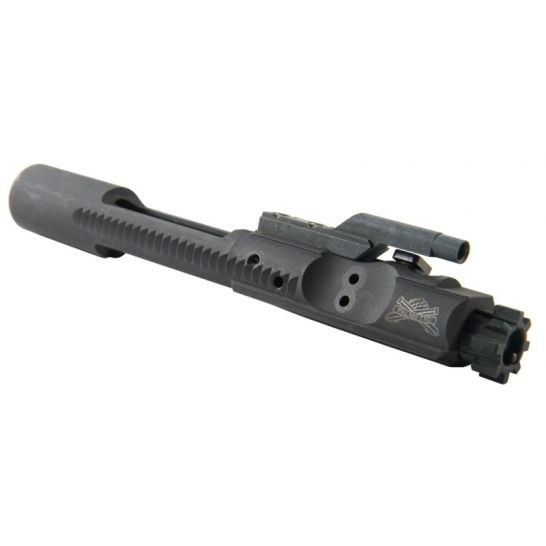

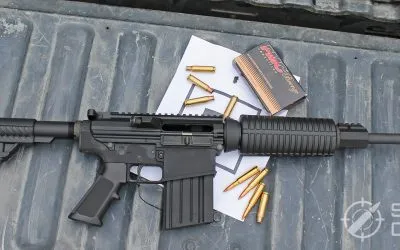
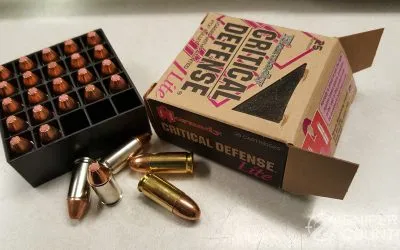
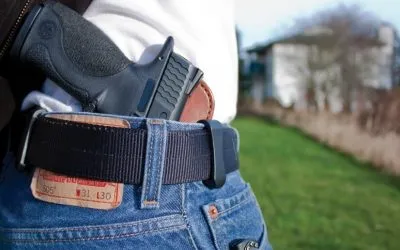
![9mm Glock Models [Ultimate Guide]](https://snipercountry.com/wp-content/uploads/2018/10/Glock-17-vs-Glock-19-vs-Glock-26-vs-Glock-41-vs-Glock-43-WM-400x250.webp)
![Handgun Caliber Chart [2025 Ultimate Guide]](https://snipercountry.com/wp-content/uploads/2018/10/Handgun-Caliber-Comparison-400x250.webp)
![Rifle Calibers [Ultimate Guide]](https://snipercountry.com/wp-content/uploads/2018/12/Header-1900-400x250.webp)






